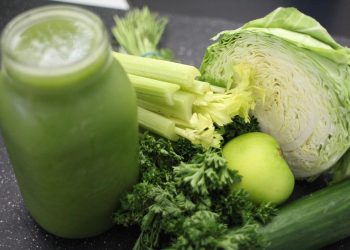Chronic pain can feel like a relentless shadow, casting doubt on your daily joy and well-being. If you’re reading this, chances are you’re seeking holistic remedies to alleviate chronic pain naturally. You’re not alone. Many are turning to natural methods to find relief, desiring alternatives that empower rather than confine.
Understanding chronic pain is essential. It goes beyond mere discomfort; it can disrupt sleep, affect relationships, and drain your spirit. But here’s the good news: nature offers a bounty of solutions. In this article, we’ll explore seven holistic remedies that can help you reclaim your life.
Contents
What is Chronic Pain?
Chronic pain lasts longer than three months and can stem from various causes, including injuries, illnesses, or even stress. Unlike acute pain, which serves as a warning signal, chronic pain often persists without a clear purpose. It can be debilitating, affecting your physical and emotional health.
Why Seek Holistic Remedies?
Holistic approaches focus on treating the body, mind, and spirit. When you embrace holistic remedies, you’re not just masking the pain; you’re addressing the underlying issues and enhancing your overall well-being.
Let’s dive into some powerful, natural methods to alleviate chronic pain.
1. Mindfulness and Meditation
Mindfulness is more than just a buzzword; it’s a transformative practice. Engaging in mindfulness can help you manage chronic pain by shifting your focus away from discomfort.
How It Works:
- Reduces Stress: Stress exacerbates pain. Mindfulness teaches you to be present, reducing anxiety and tension.
- Enhances Awareness: You’ll develop a deeper understanding of your body’s signals, allowing you to respond more effectively to pain.
Getting Started:
- Find a quiet space and sit comfortably.
- Focus on your breath, letting thoughts drift away.
- Start with just a few minutes daily, gradually increasing the time.
Resources: Check out the Mayo Clinic’s guide on mindfulness to learn more.
2. Yoga and Gentle Movement
Yoga is a beautiful blend of physical postures, breathing exercises, and meditation. It’s not just for the flexible; it’s for anyone looking to ease pain and improve mobility.
Benefits:
- Strengthens Muscles: Supporting your body better can lead to less strain and discomfort.
- Improves Flexibility: Gentle stretching enhances circulation and reduces stiffness.
Getting Started:
- Look for classes designed for beginners or those with chronic pain.
- Online platforms like YouTube have fantastic sessions you can follow from home.
Resources: Explore the International Association of Yoga Therapists for more information on therapeutic yoga.
3. Herbal Remedies
Many herbs have been used for centuries to relieve pain. They’re nature’s way of providing relief without the side effects of pharmaceuticals.
Top Herbs for Pain Relief:
- Turmeric: Contains curcumin, which has anti-inflammatory properties.
- Ginger: Known for reducing muscle pain and soreness.
- Willow Bark: Often referred to as nature’s aspirin.
How to Use:
- Incorporate these into your meals or enjoy as teas.
- Always consult with a healthcare provider before starting any herbal regimen.
Resources: The National Center for Complementary and Integrative Health offers insights on the effectiveness of herbal remedies.
4. Acupuncture
Acupuncture has roots in Traditional Chinese Medicine and involves inserting thin needles into specific points on the body. It’s a powerful tool for managing chronic pain.
Why It Works:
- Stimulates Endorphins: Your body releases natural painkillers, reducing discomfort.
- Balances Energy: Helps to restore harmony in your body.
What to Expect:
- Find a certified acupuncturist to ensure safety and effectiveness.
- Sessions typically last 30 to 60 minutes.
Resources: The American Academy of Medical Acupuncture provides information on accredited practitioners.
5. Essential Oils
Essential oils are potent extracts from plants, offering a fragrant way to relieve pain. They can be used in various methods, such as aromatherapy or topical applications.
Top Essential Oils for Pain Relief:
- Peppermint Oil: Known for its cooling effect, it can help with headaches and muscle aches.
- Lavender Oil: Offers calming benefits, which can alleviate tension and stress-related pain.
- Eucalyptus Oil: Excellent for respiratory issues and muscle pain relief.
How to Use:
- Add a few drops to a diffuser or mix with a carrier oil for topical use.
- Always do a patch test to avoid skin reactions.
Resources: The National Association for Holistic Aromatherapy provides guidance on safe essential oil use.
6. Dietary Changes
What you eat plays a crucial role in your pain levels. An anti-inflammatory diet can significantly reduce chronic pain.
Foods to Focus On:
- Fruits and Vegetables: Rich in antioxidants; aim for a colorful plate.
- Healthy Fats: Include omega-3 fatty acids found in fish or flaxseeds.
- Whole Grains: Opt for brown rice, quinoa, and oats over refined grains.
Foods to Avoid:
- Processed Sugars: They can promote inflammation.
- Trans Fats: Found in fried foods and baked goods.
How to Start:
- Gradually incorporate more whole foods into your meals.
- Consider consulting a nutritionist for personalized guidance.
Resources: The American Heart Association offers tips on heart-healthy eating that can also benefit your overall well-being.
7. Physical Therapy
Physical therapy is more than just rehabilitation; it’s an essential part of managing chronic pain. A skilled therapist can help you regain strength and flexibility.
Benefits:
- Personalized Treatment Plans: Tailored to your specific needs and pain levels.
- Education: Learn techniques to manage pain effectively at home.
What to Expect:
- Sessions may include exercises, manual therapy, and education on posture and body mechanics.
- Consistency is key; regular appointments yield the best results.
Resources: The American Physical Therapy Association can help you find a licensed physical therapist.
Bottom Line
Finding holistic remedies to alleviate chronic pain naturally is not just about relief; it’s about reclaiming your life. By integrating mindfulness, yoga, herbal solutions, acupuncture, essential oils, dietary changes, and physical therapy, you can empower yourself against chronic pain.
You deserve a life filled with joy, movement, and connection. Start small; pick one remedy that resonates with you and give it a try. Keep experimenting until you find what works best for you, and remember: healing is a journey, not a race.
FAQ
1. Are holistic remedies safe for everyone?
While many holistic remedies are safe, it’s essential to consult with a healthcare provider, especially if you have existing medical conditions or are on medication.
2. How long does it take to see results from these remedies?
Results vary by individual and remedy, but many people notice improvements within a few weeks of consistent practice.
3. Can I combine these remedies?
Absolutely! Many people find that a combination of remedies works best for them, but always listen to your body and consult professionals as needed.
Take the first step today. Your journey to healing starts now!
Get Your FREE Natural Health Guide!
Subscribe now and receive our exclusive ebook packed with natural health tips, practical wellness advice, and easy lifestyle changes — delivered straight to your inbox.















